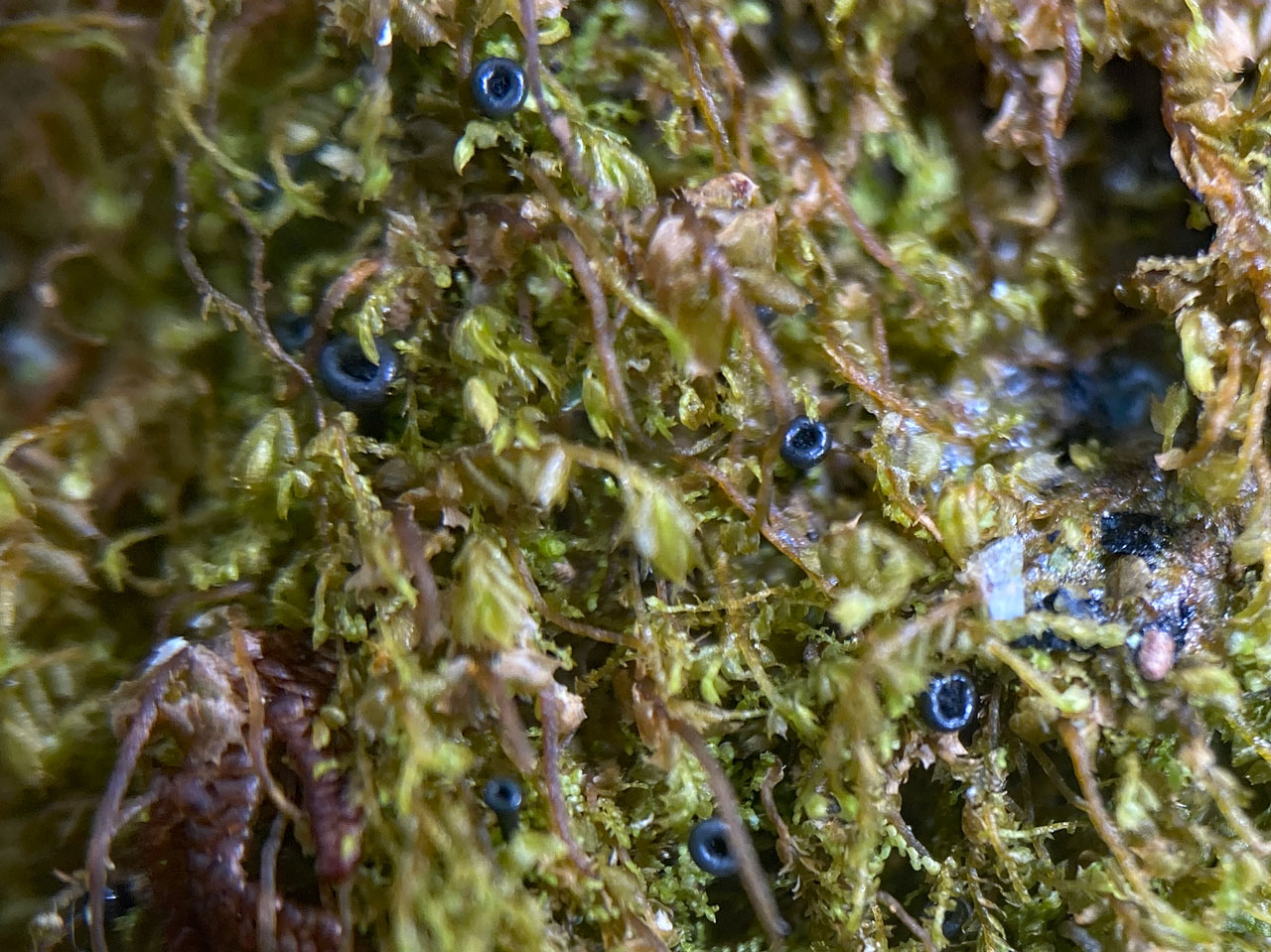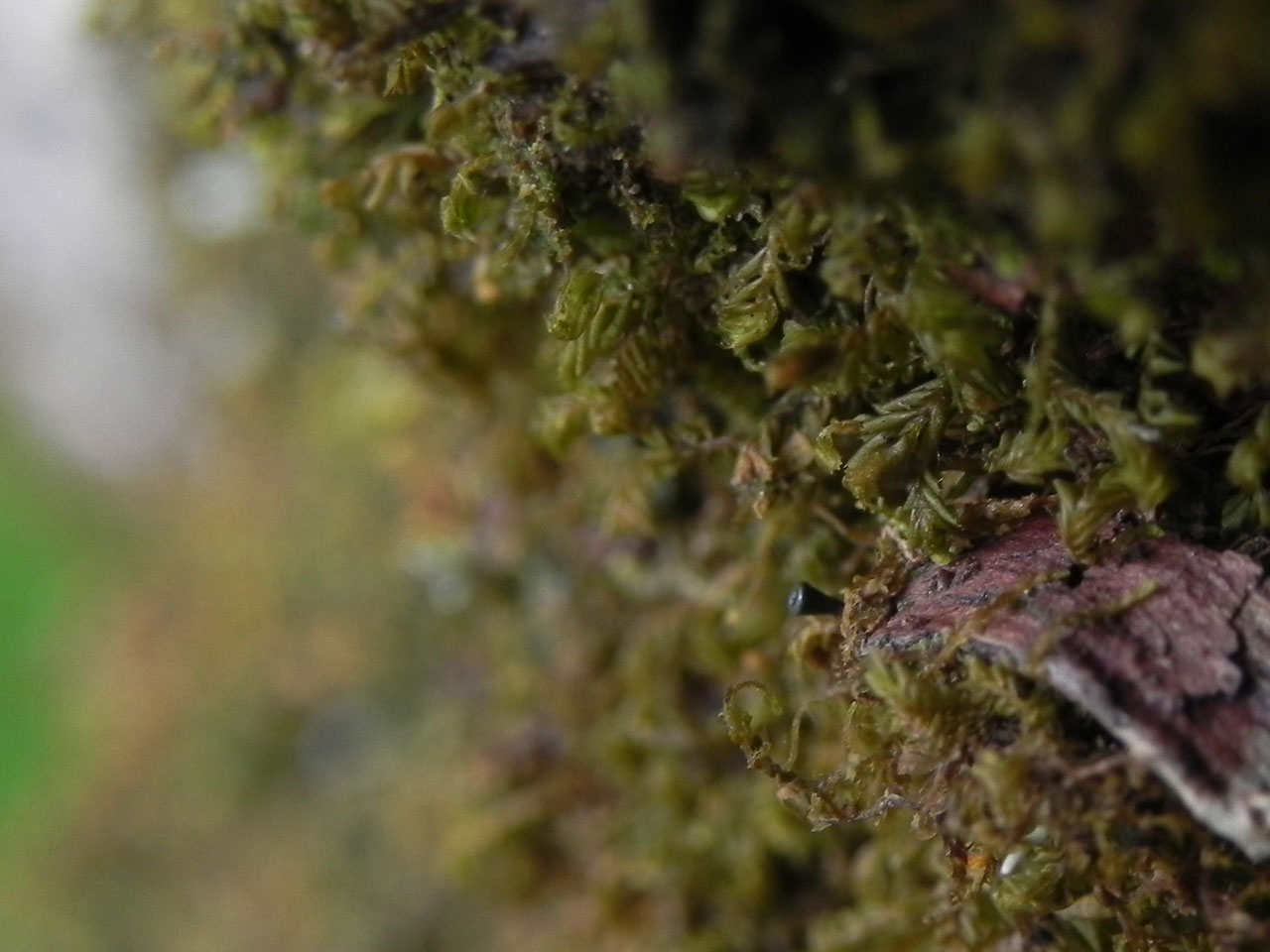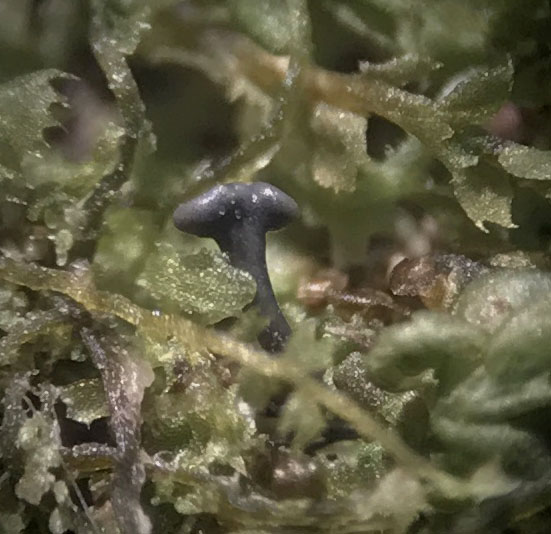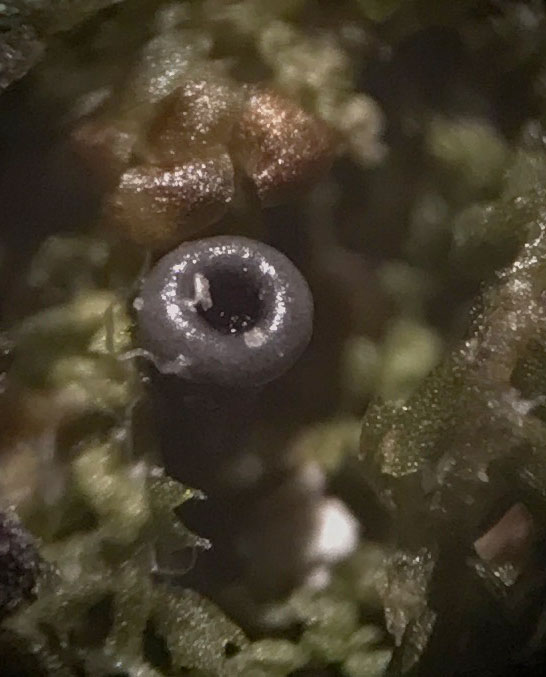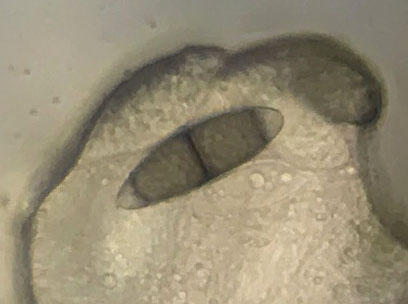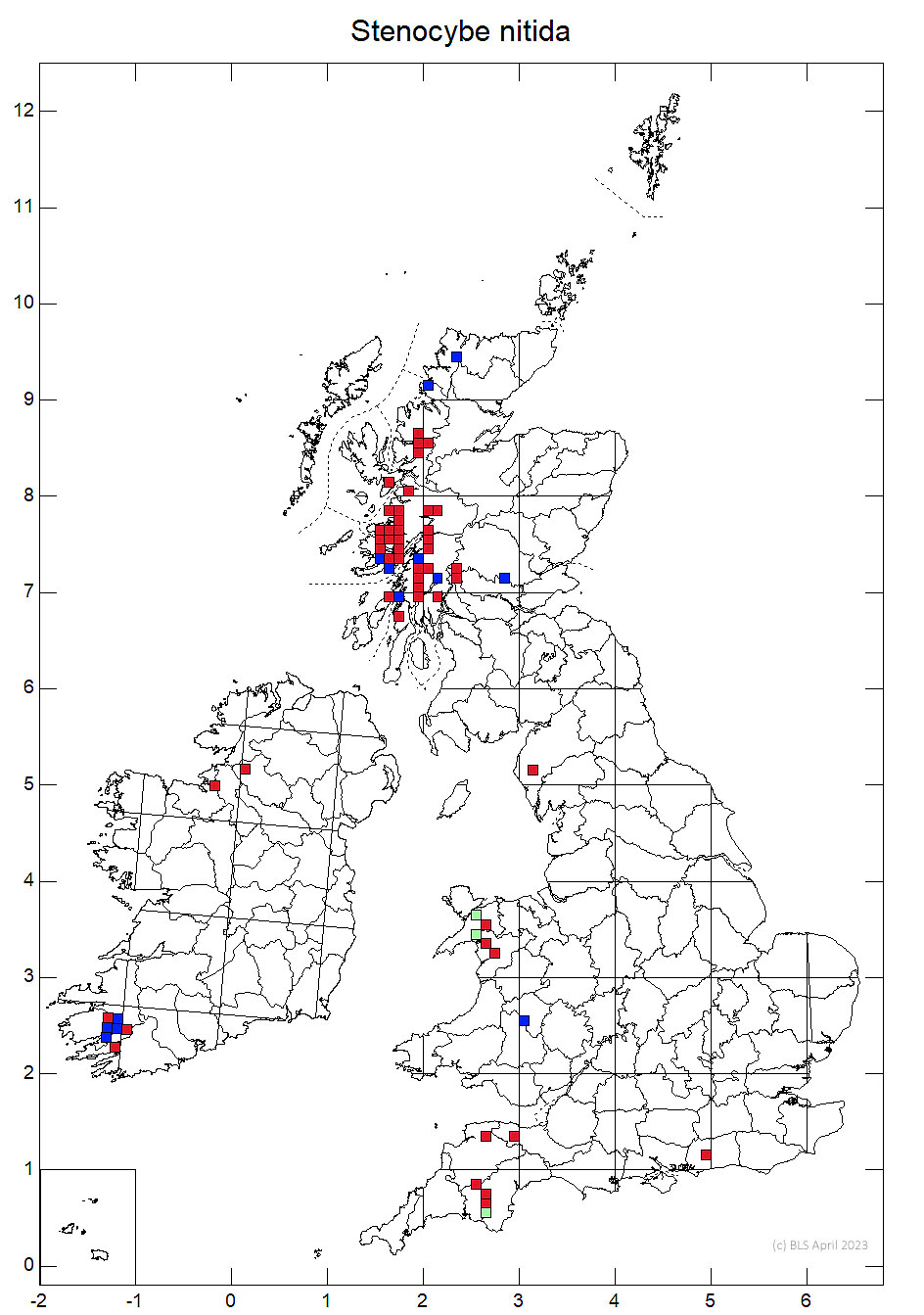A small pinhead fungus with shining grey-black "gun metal" coloured apothecia, which parasitises liverworts, especially Plagiochila punctata. Found partially buried in old tufts of leafy liverworts, especially on old trees and rocks in damp, humid situations in temperate rainforests.
Apothecia 1–1.5 (–2) mm tall; stalk 0.08–0.12 mm diam., pale to dark olive- or grey-black; head (0.2–) 0.3–0.6 (–0.7) mm diam., narrowly obconical, dark grey to nearly black with a distinctly thick cartilaginous tumid shining exciple surrounding a narrow, 0.1–0.2 mm diam., pore-like black roughened disc; paraphyses ca 1 µm diam., numerous, branched or ± anastomosing, persistent. Asci (175–) 200–300 × 15–25 (–28) µm, cylindrical, wall persisting. Ascospores (30–) 34–43 (–50) × (11–) 13–17 (–18.5) µm, 3-septate, ellipsoidal, wall thin or slightly thickened, comprising two large dark red-brown median cells with large rounded oil droplets and two much smaller and paler end cells.
Parasitises liverworts, especially Plagiochila punctata. Distinguished in the field from Stenocybe septata apothecia which happen to be growing through liverworts, by the shining grey-black "gun metal" coloured apothecia; S. septata, has uniform black heads. Can be found by target searching poorly grown tufts of Plagiochila punctata in temperate rainforests.
Partially buried in old tufts of leafy liverworts (usually Plagiochila punctata), especially on old trees and rocks in damp, humid situations in temperate rainforests.

In high rainfall areas in western Britain and Ireland, rather rare in Ireland and England and Wales but more widespread in the western Highlands.
Probably somewhat under recorded but appears very localised and confined to very high quality rainforest habitats, especially humid ravines. Usually occurring in small populations.
Britain: Notable
Wales: Data Deficient
Sanderson, A., Cannon, P., Coppins, B., & Simkin, J. (2025). Mycocaliciales: Sphinctrinaceae, including Chaenothecopsis, Mycocalicium, Phaeocalicium, Sphinctrina and Stenocybe. Revisions of British and Irish Lichens 52: 1–15.
Text by Neil A Sanderson based on Sanderson et al (2025).
